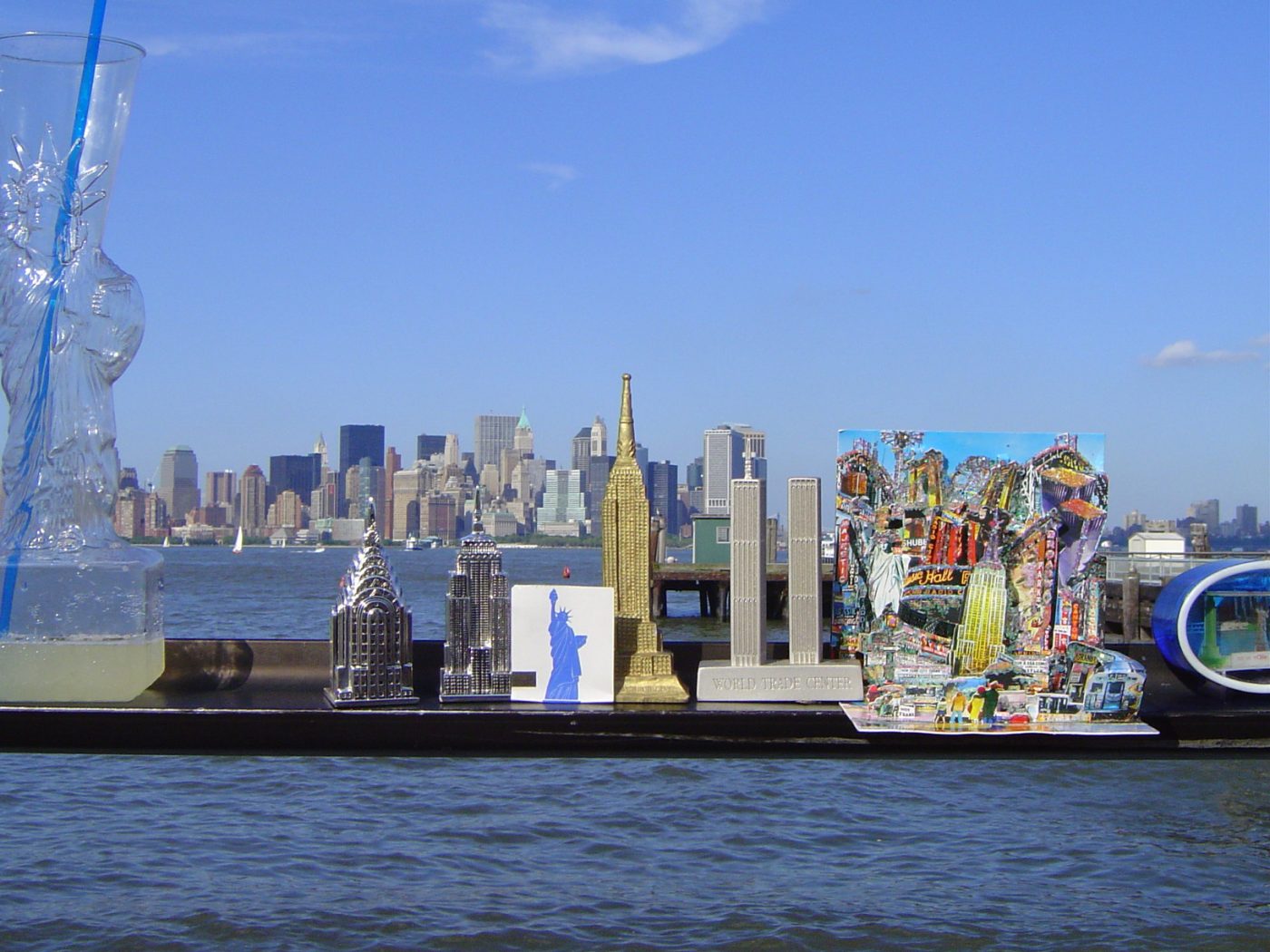
If I had been an artist, I’d collect all souvenirs in my house and make a picture of that collection by way of a selfie: show me your travel treasures and I’ll tell you who you are. But I’m not an artist, so I’ll keep it at two. This is the first one.

I collect postcards (I never send any). The uglier the better. This Hollywood like couple is supposedly representing the country of Sangria, Sun and Sand. And Passion. Why the woman wears the Dutch flag as skirt, not a clue, why the man looks like an actor in a cheap soap series, maybe you can tell. And yet: this is Spain, probably in the 70s or 80s (these embroidered cards are no longer around I think).
So, what do we have: memory (mine, although I don’t recall where and when to be honest), representation, cheapness, tourist industry (this product is not about quality or beauty, it is about making money), the idea that an experience should be brought home, the postcard as selfie avant-la-lettre, showing: I was there (using the pretext: I’m thinking of you, you have my attention!).
Next: a little painting, the size of an iPad.


(the image comes from an art auction catalogue and that scroll was sold at a different price). No misunderstanding: the skilled Dafen painters take pride in what they produce. They sometimes even go ‘avant-garde’ in their ‘free work’. And skilled they are: you can bring a photo of your favorite Cezanne or Rembrandt and they’ll reproduce it within two days. But the painting we asked for they didn’t want to do: unclear if this artist had been dead long enough to avoid copyright issues – another thing you wouldn’t expect from a Chinese copy painters workshop. What do we have here: memory, authenticity, a peculiar copy-original relation.
Next: an object that is not in my possession. It could be though, because you can purchase it.
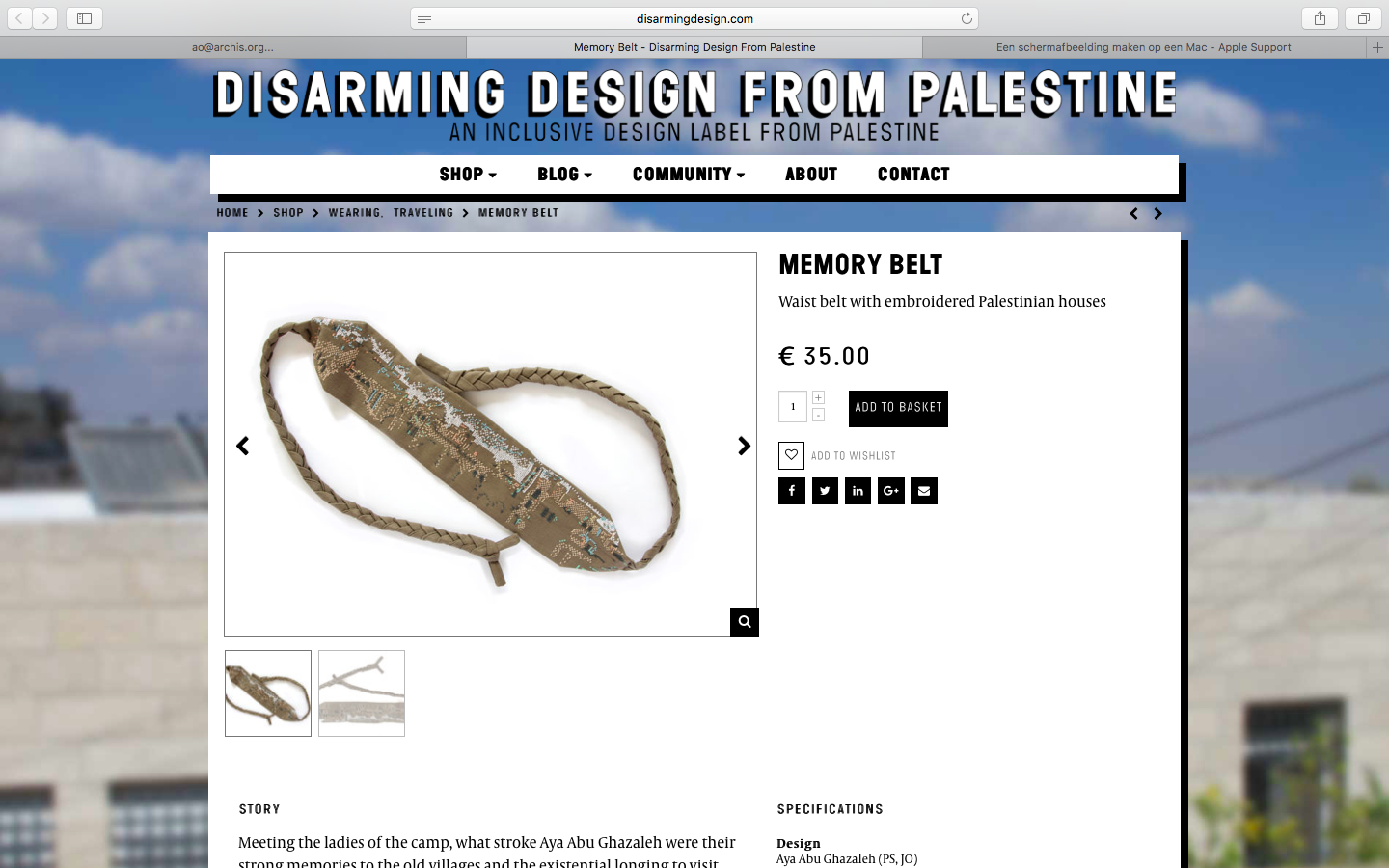
Or you can also admire it in a museum: Het Nieuwe Instituut in Rotterdam. The institution dedicates an exhibition to a project with Palestinian women in refugee camps in Lebanon. These women produce items that express their complex relation with the location they inhabit and the history it represents. This garter or purse is adorned with a distorted skyline of Palestinian houses.
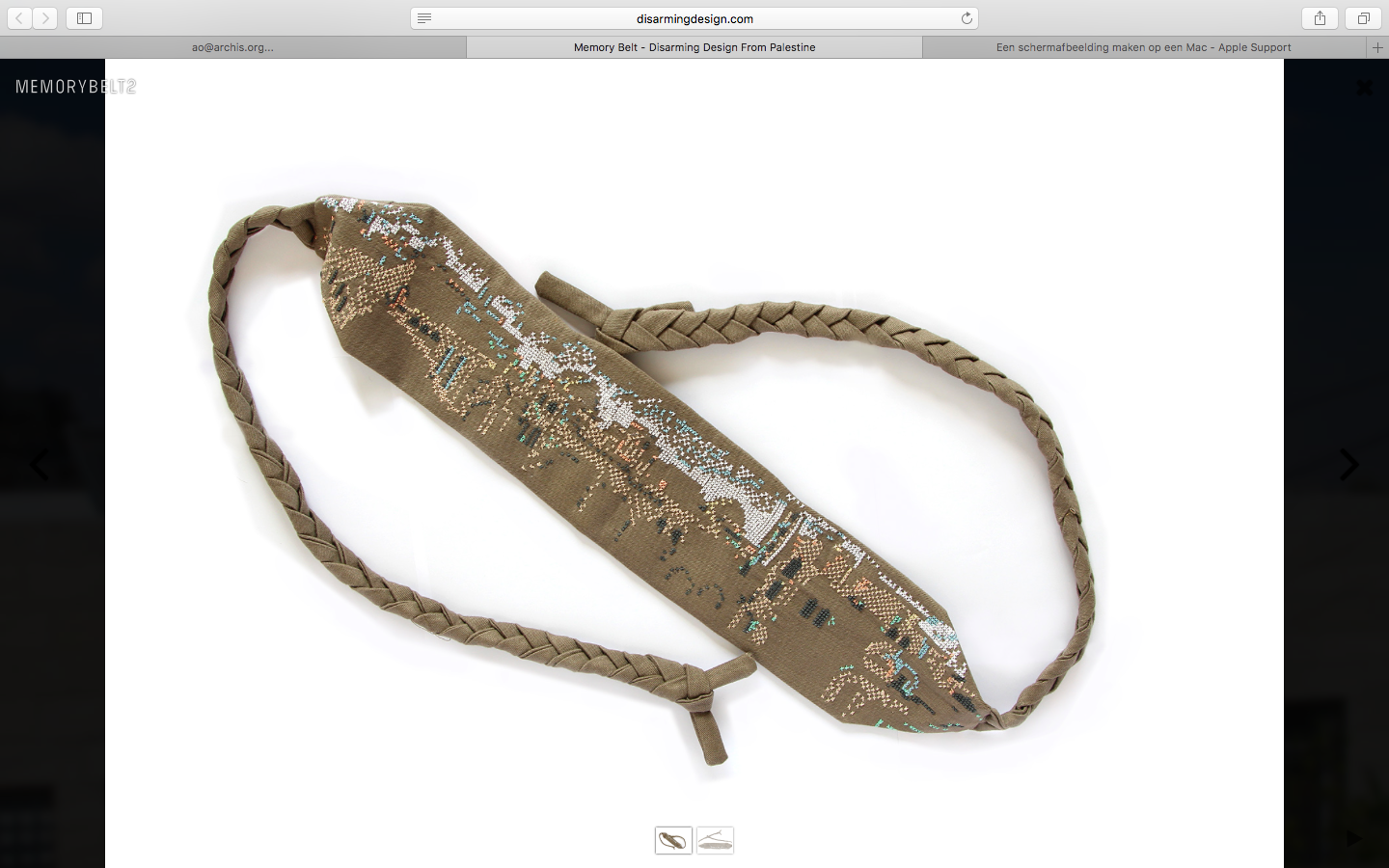
The memory of a place that is no longer; the memory of a place that cannot be. Even if one is first attracted by the object’s visual appeal, the story adds a quality that has a persuasive value.
So what do we have: distorted memory (which is of the essence in this case), commerce, advocacy, the inverse relation with memory: not your own, but someone else’s. Also: the element of flux enters the scene.
Before I go there, flux, there is another souvenir relation to be discussed: bringing home. In our RSVP event #4: Shrink, Archis brought NY souvenirs back to NY to remind the city that bigger, higher, denser is not necessarily better and that we should question such taken for granted assumptions and mechanisms.

At that time we didn’t know anything about Burj Dubai, nowadays Burj Khalifa, that roughly doubled NY’s highest skyscraper, making the game to surpass ‘the other’ futile and completely uninteresting.
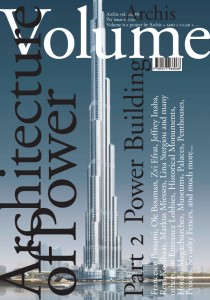
Maybe we’ll see the one mile high tower within a decade somewhere on this planet, but I couldn’t care less. It is completely out of sync with current conditions and realities. New York will continue to replicate uniqueness on the scale of the object, no doubt, but that is not what this exhibition in Storefront focuses on.
So what do we have? That memory can have a critical relation with the source of origin.
Right, so this is more or less the field the current exhibition explores: engagement. In particular in its social dimensions. The contributions of the other presenters, Marga, Joep and Qspace illustrate this point, asking attention for ignored minorities in this city. In the souvenir tourism relation, a souvenir can hardly be critical and yet, this exhibition (at least in the interpretation of the contributors) advocates a socially engaged appreciation of the current city. The ordinary can or should be seen as monumental, generic can or should be seen as characteristic, iconic qualities cannot do without the presence and contributions of minorities, etc. The challenge as presented here is to create iconicity out of the large reservoir of (so far) non-iconic material. Sometimes to promote the greater good, sometimes to improve a local situation, sometimes to correct what went wrong.
Can I add a different perspective, not past or present but the future? The technological rat race currently going on is changing our cities and societies and will influence them much more in the near future.

Datafication will change the looks of our cities,
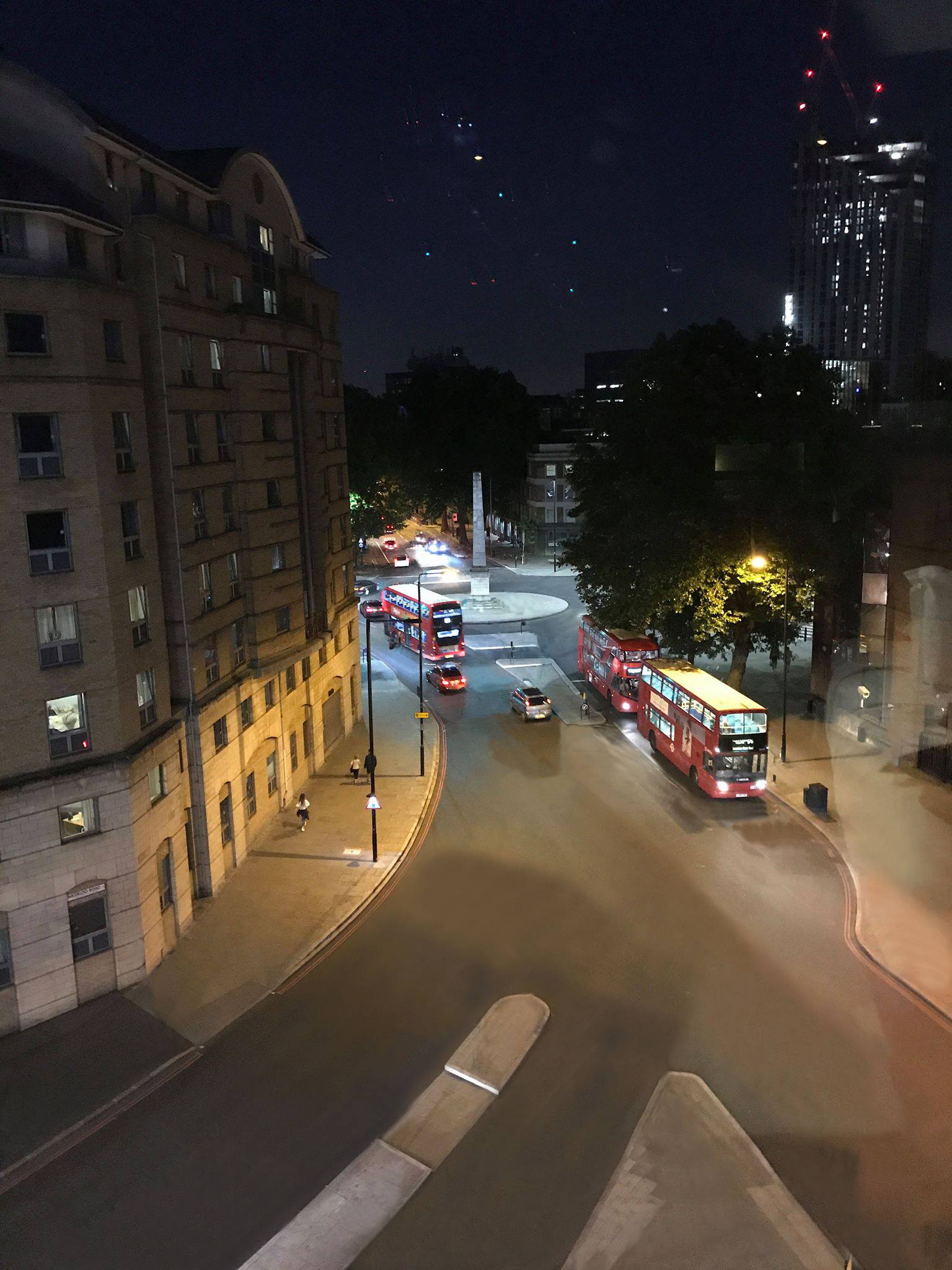
Image editing: Denisse Vega de Santiago
it will change the accessibility of our territory (where to go and where not to), it’ll blur the physical and virtual even further (what selfie can one make in such a surroundings?)

and in the longer run may even change the way our physical surrounding, the envelop will interact with us.
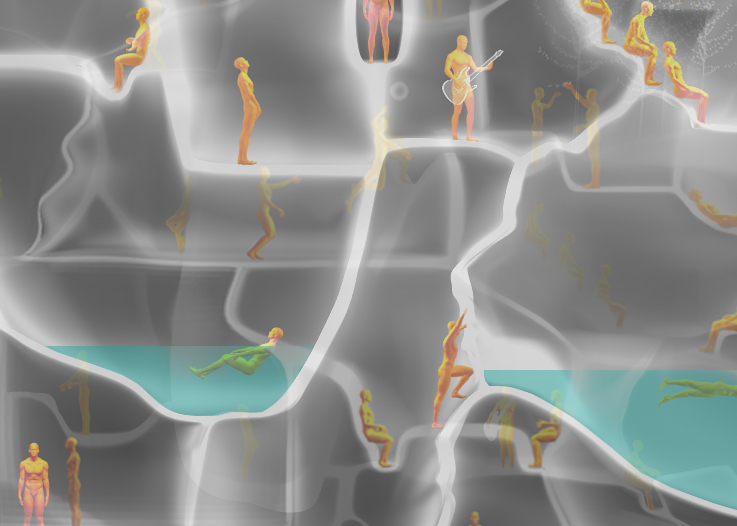
Peeling off, adding on, open ended. It’ll redefine the very notion of souvenir: a life without objects.